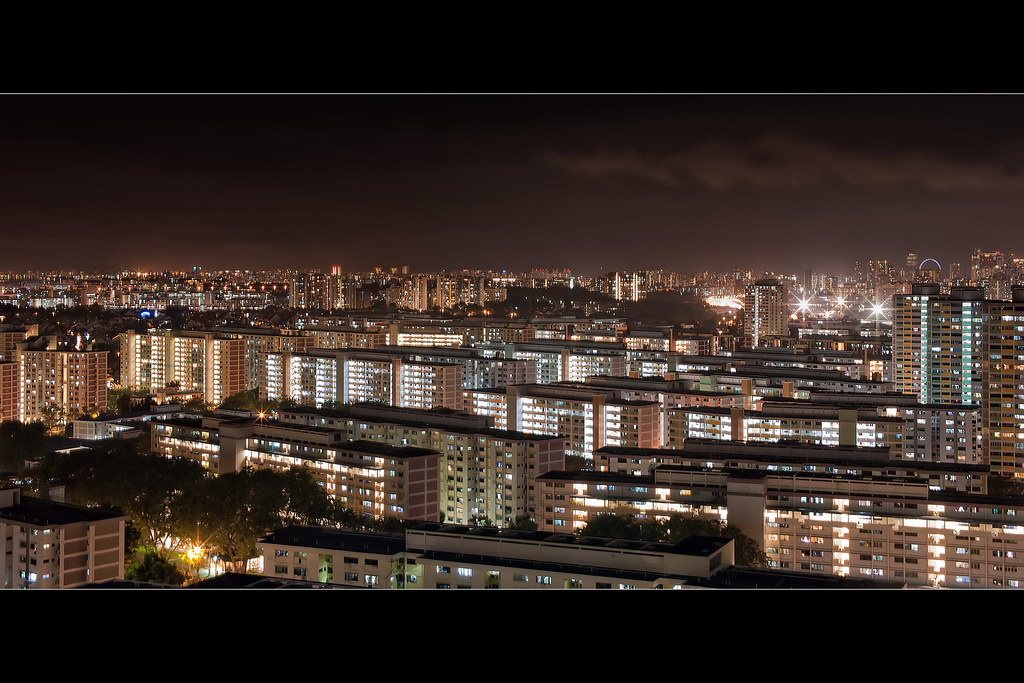controlling blown out highlights, especially in night lights that are extreme in contrast, which most of the time are small and numerous, can be more challenging because the camera is unable to expose optimally for every single bright region (on all auto-metering modes). for example in your picture, the crystal pavillions are blown-out.
you may want to enable ADR in-camera as a first measure. i leave it on 'low' all the time
also, shoot raw and work the recovery slider in adobe camera raw.
you could also do multiple exposure blending depending on how critical those details in the highlights matter to you.
auto-exposure tends to expose too much for the sky, which further exaggerates the unpleasing red hue of the night sky in SG. this is expected because the camera is dumb and will expose for certain majority % of the scene depending on your metering mode. so, white balance setting and post color balance adjustments are also important to produce a more pleasing result.
sharpening, contrast and saturation are exceptionally important for night scapes. i use LAB sharpening and nik tonal contrast to bring out the 'punch'.
take note that even at f11 and up, in a very deep scene, you will still encounter softness especially towards the rear end of the scene. i apply selective sharpening to the mid-rear sections of the picture to compensate this.
starburst effect depends on the lens as well. i use a rokinon 14mm which gives curiously large starbursts :bsmilie: just sharing an example:
hope this helps, night photography is both challenging and enjoyable





